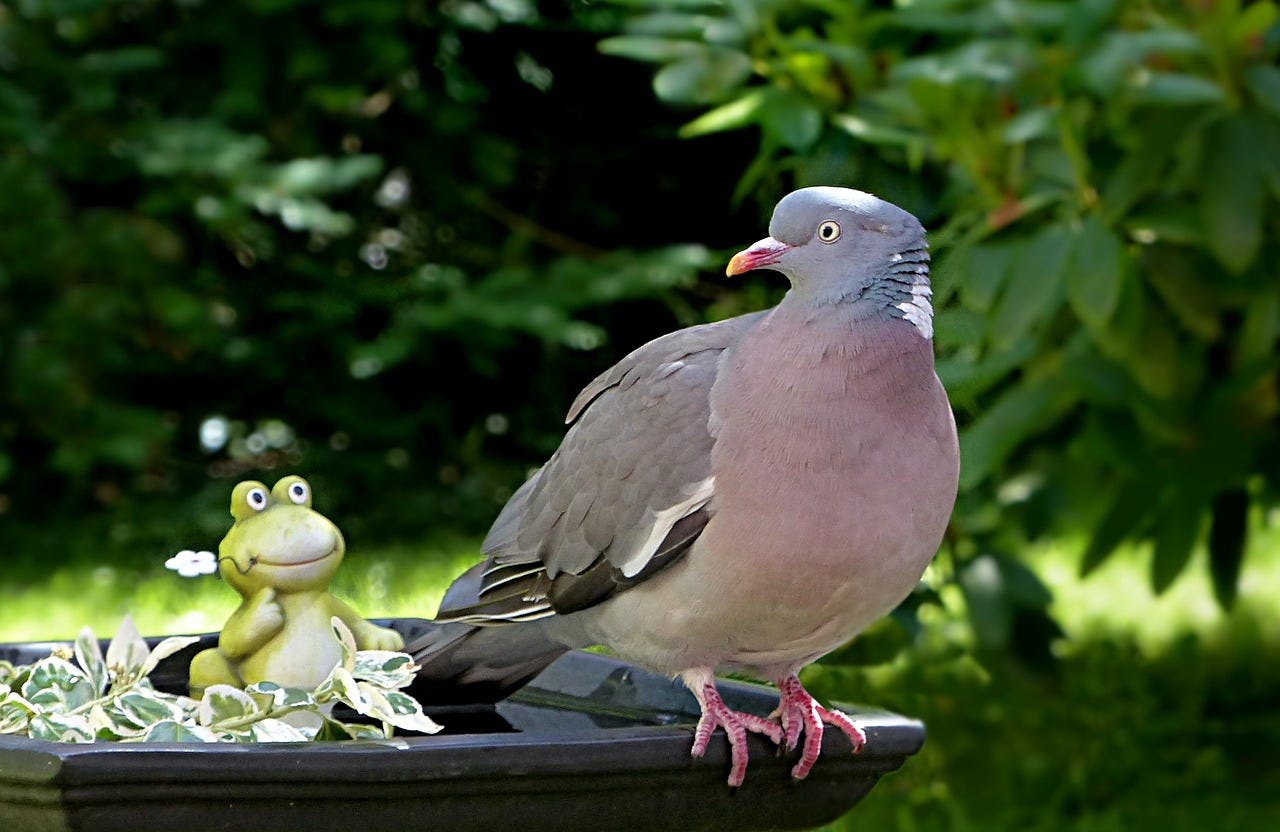The weird, rhythmic song of the stock dove is among the least known of all our common birds.
Like other doves and pigeons, it’s a variation on a ‘coo’. But the stock dove sounds like it’s doing things in reverse.
Imagine the bird is scratching a record like a DJ, swiping it backwards and forwards.
Once warmed up it repeats this quite rhythmically a few times, summoning distinctly Balearic vibes.
It’s a sound often encountered in parkland, open woodland and wooded countryside, and increasingly in large gardens and urban parks too.
Getting a look at what’s making the noise is a whole other trick.
Stock doves like to tuck themselves away, high in an old tree, among the leaves. It’s here that a pair will often make their summer home, in a natural cavity or perhaps in a box intended for an owl. Where there are fewer trees, the doves may adopt farm buildings instead.
They are easier to see in the winter, when they flock and feed together on open ground, especially around arable fields.
At first look it’s easy to pass over a stock dove as a young woodpigeon (one without the white bits), or perhaps a smart feral pigeon.
A closer look confirms they are more compact than a woodpigeon, with an iridescent bottle-green patch on the neck and a plum-coloured blush to the chest.
The back is slate grey with darker charcoal edges to the tail and flight feathers. In flight this appears as a strong border all the way around the wings, which is distinctive and adds to the overall neatness of their appearance.
The eye is black, lending them a softer, less manic expression to the face.
Bucking the trend of many other farmland species in Britain, the overall number of stock doves has increased substantially over the last fifteen years. More than 300,000 pairs are now present, with the densest populations in lowland England. At the same time, their range has contracted in the north and west of Britain, and in Ireland where they now tend to be found in the east.
Stock doves continue to call from their favoured shady spots on and off through the summer. Once you know that rhythmic schtick it can be surprising to realise how many are up there, swiping away on their decks.
Also playing it coo: Woodpigeon
Links of the week
Inkcap Journal made a welcome return at the end of May. Sophie Yeo and her team have produced some of the most thoughtful and warm-hearted commentary on British nature and environmental issues over recent years, and it’s good to have them back. BUT - they need more subscribers to keep up the good work. Discounted subscriptions are available until Tuesday 6 June. I’ll be signing up, do join me if you can.
The Rewild Podcast - a tedious crawl along the A27 back from Dorset to Sussex this week was considerably enlivened by this series from James Shooter and Rewilding Europe. Each episode focuses on a project to restore nature at scale (from the Scotland Highlands, to the lagoons of the Carmargue, to a watershed in Portugal) with much of the commentary devoted to the challenges around working with communities and local economies. Fact-packed and inspiring in equal measures.
Upcoming events from Birdsong Academy
Stock Dove is among the species we’ll be tuning our ears to on the next Birdsong Academy walkshop at Herstmonceux Castle in Sussex, on Saturday 17 June. Recent walks have turned up Barn Owl, Firecrest and Grey Wagtail - join us to see what’s next.
Thanks for reading. If you enjoy this newsletter, please pass it on or recommend it, in whatever spaces you recommend things. All the support and feedback is appreciated.
And remember, if you would like an audio version of each Shriek - plus everything in the archive - and the option to join me for a monthly virtual walk on Zoom - you can subscribe for £25 a year, or £5 a month.
Until next time, enjoy the birds.
~ Charlie
Media credits:
Stock Dove recording by Alexander Henderson, reproduced with permission. Listen to the original file on xeno-canto.
Stock Dove image by Emphyrio on Pixabay




